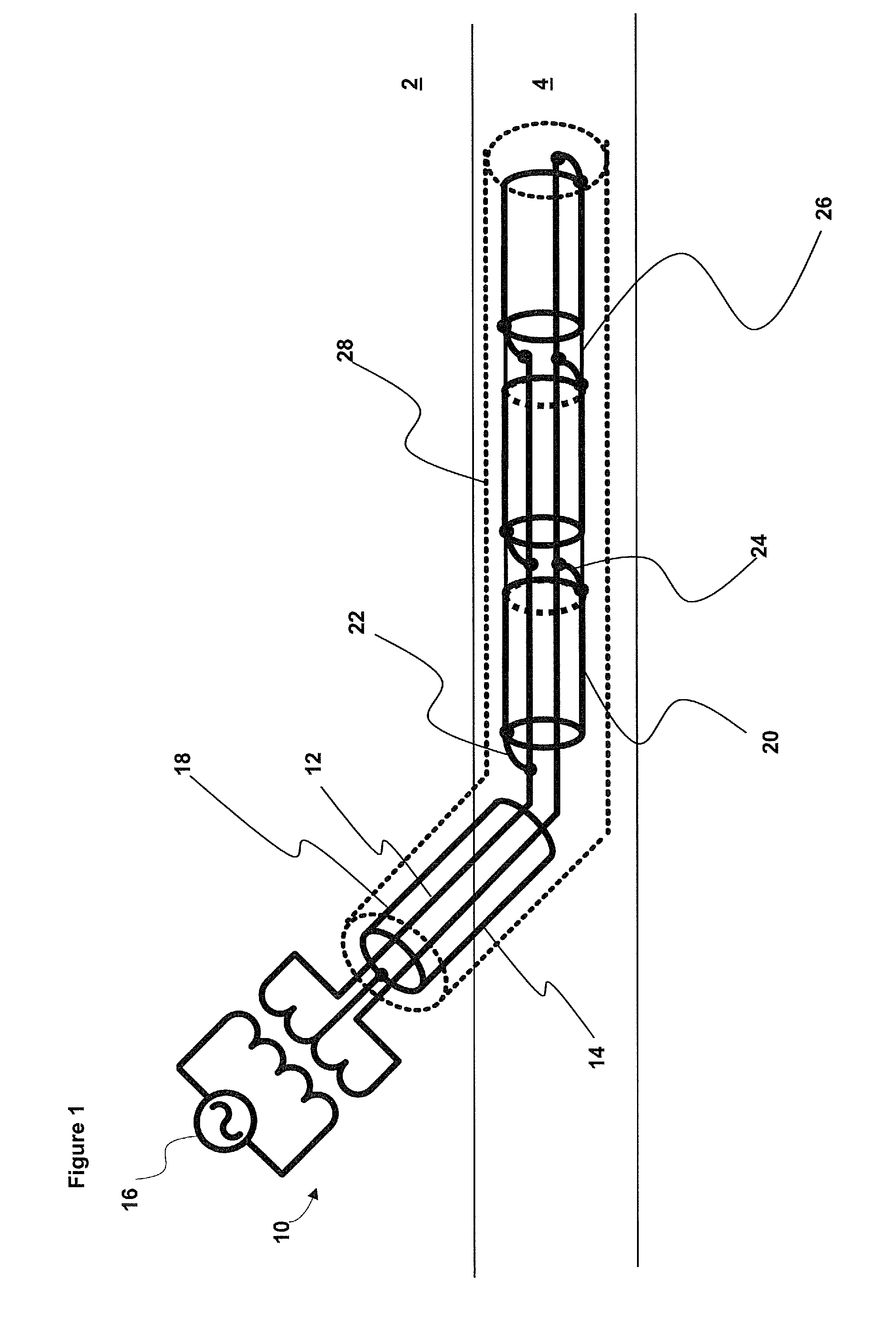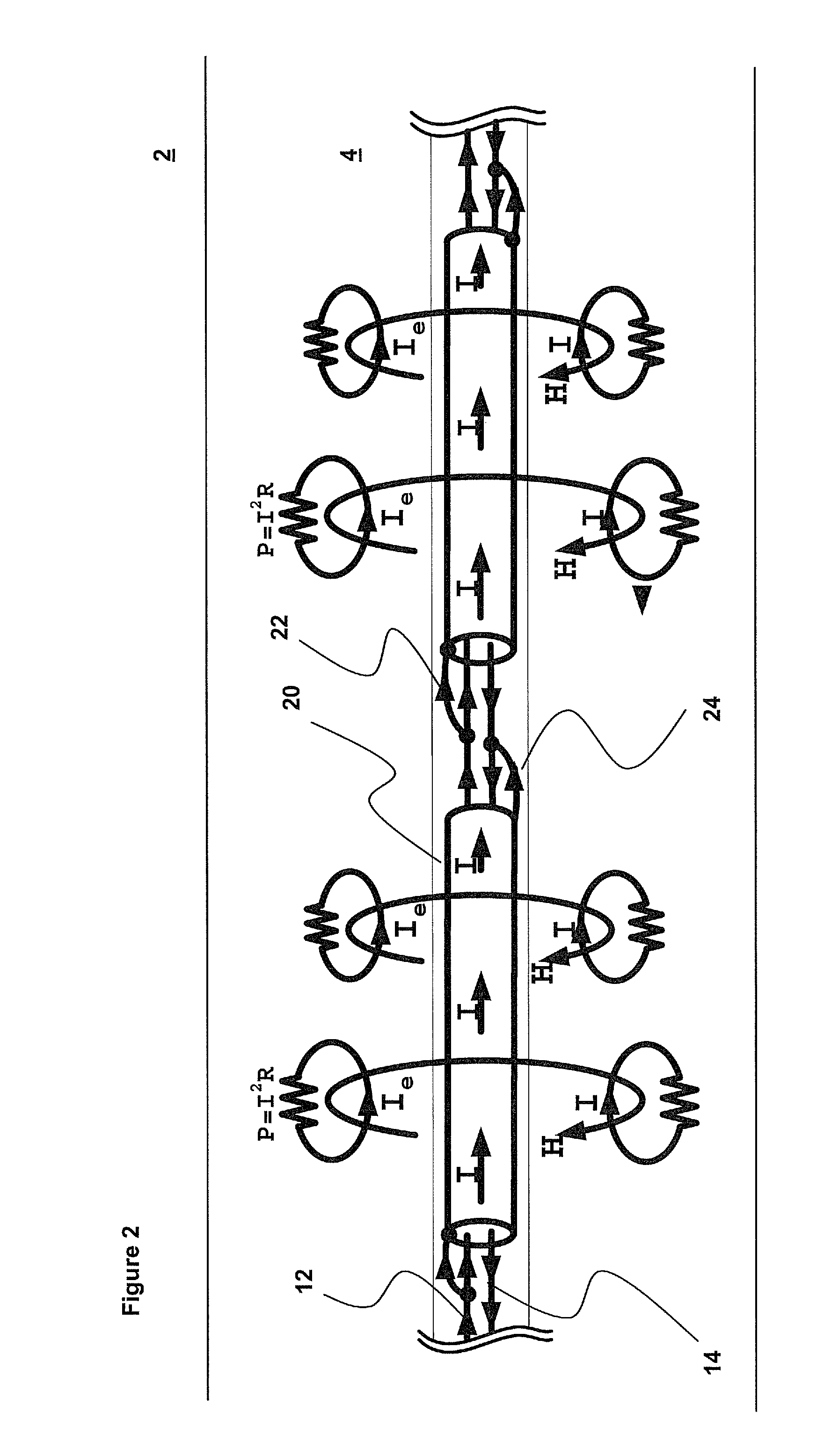Twinaxial linear induction antenna array for increased heavy oil recovery
a technology of heavy oil recovery and induction antenna array, which is applied in the direction of insulation, immersion heating arrangement, and wellbore/well accessories, etc., can solve the problems of slow and unreliable steam enhanced oil recovery, inability to extract standard crude oil, and inability to drill and refine the method used in extracting standard crude oil
- Summary
- Abstract
- Description
- Claims
- Application Information
AI Technical Summary
Problems solved by technology
Method used
Image
Examples
Embodiment Construction
[0023]The subject matter of this disclosure will now be described more fully, and one or more embodiments of the invention are shown. This invention may, however, be embodied in many different forms and should not be construed as limited to the embodiments set forth herein. Rather, these embodiments are examples of the invention, which has the full scope indicated by the language of the claims.
[0024]Radio frequency (RF) heating is heating using one or more of three energy forms: electric currents, electric fields, and magnetic fields at radio frequencies. Depending on operating parameters, the heating mechanism may be resistive by joule effect or dielectric by molecular moment. Resistive heating by joule effect is often described as electric heating, where electric current flows through a resistive material. Dielectric heating occurs where polar molecules, such as water, change orientation when immersed in an electric field. Magnetic fields also heat electrically conductive material...
PUM
 Login to View More
Login to View More Abstract
Description
Claims
Application Information
 Login to View More
Login to View More - R&D
- Intellectual Property
- Life Sciences
- Materials
- Tech Scout
- Unparalleled Data Quality
- Higher Quality Content
- 60% Fewer Hallucinations
Browse by: Latest US Patents, China's latest patents, Technical Efficacy Thesaurus, Application Domain, Technology Topic, Popular Technical Reports.
© 2025 PatSnap. All rights reserved.Legal|Privacy policy|Modern Slavery Act Transparency Statement|Sitemap|About US| Contact US: help@patsnap.com



